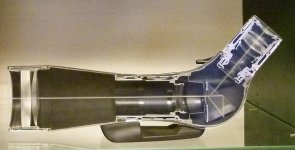I've been curious about the prism used in different spotting scopes. The Swaro ATS series uses a single Schmidt prism, and the older AT80 uses a Porro prism (post#9), though I'm still not sure how to achieve a 45-degree angle with "standard" Porro prisms only:
Need Info about Swarovski ATM 65
The single Schmidt design in ATS would result in a larger physical length with a given focal length. The ATX is shorter and seems to use a Porro-like design in the not-well-described patent (post#3):
ATX ocular module design
Another unique design is used in the Meoptar S2, "a Porro prism divided into 3 parts", I tried to draw the optical path but have not succeed yet:
Meopta S2 Mysteries
My question is: what kind of prism do other manufactures use? Do KOWA 883 and Swaro ATX use different prism configurations?
PS: even for a single roof prism, there are two configurations, the first is the ATS with a Schmidt prism:

Another is the diagram from the Celestron website, but I doubt if it's correct, as the roof prism like that should only reverse the image horizontally.

PS2: This should be the more straightforward design: Porro+half penta prism:

The half penta prism does not erect the image:

This page from Edmunds has a list of prisms:
Introduction to Optical Prisms
Need Info about Swarovski ATM 65
The single Schmidt design in ATS would result in a larger physical length with a given focal length. The ATX is shorter and seems to use a Porro-like design in the not-well-described patent (post#3):
ATX ocular module design
Another unique design is used in the Meoptar S2, "a Porro prism divided into 3 parts", I tried to draw the optical path but have not succeed yet:
Meopta S2 Mysteries
My question is: what kind of prism do other manufactures use? Do KOWA 883 and Swaro ATX use different prism configurations?
PS: even for a single roof prism, there are two configurations, the first is the ATS with a Schmidt prism:

Another is the diagram from the Celestron website, but I doubt if it's correct, as the roof prism like that should only reverse the image horizontally.

PS2: This should be the more straightforward design: Porro+half penta prism:

The half penta prism does not erect the image:

This page from Edmunds has a list of prisms:
Introduction to Optical Prisms




